Specialized Trivent (2013)
I’m a long-time Specialized shoe user. I have owned two pairs of Trivent triathlon shoes, both of which were purchased at full retail price (full disclosure: they were Christmas presents – thanks Mom and Dad!).
My trusty Trivents did everything I needed them to. In fact, the only reason I replaced them is that each pair got used for two or three years, and well… smelled worse than your post-Ironman race outfit on top of a pile of garbage. No amount of washing or Febreze was going to save them from certain pungent death.
That being said, I was understandably pleased to hear that Specialized wanted to send along a couple pairs of their newest Trivents for testing by yours truly. Let’s take a look to see if they stack up to my old favorites.
Trivent Expert – $175
We’ll start with the second-tier Trivent Expert. This shoe is the equivalent to what I’ve owned in the past, so it effectively updated me to 2013.
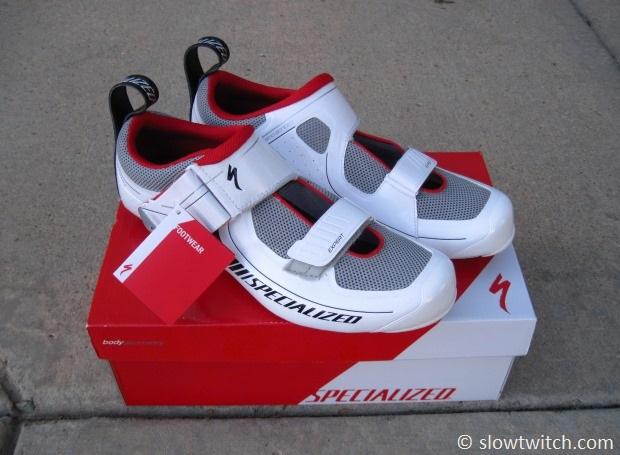
The Trivent Expert is what I’ll call a ‘standard’ triathlon shoe. It has a simple Velcro strap closure system – no ratchets or buckles here:
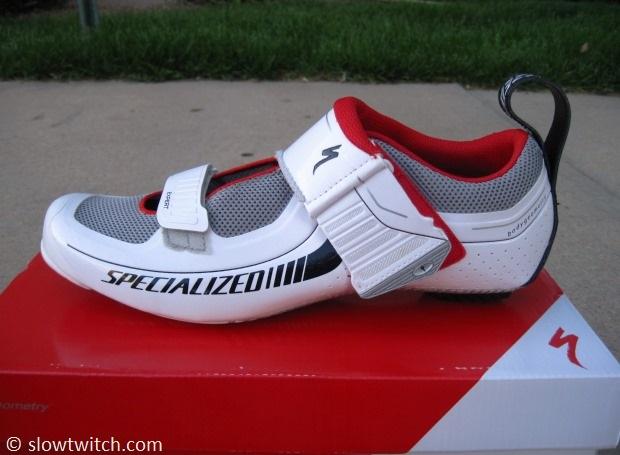
Also notice the generous rear loop, which aids in putting the shoes on in a hurry.
This photo shows a comparison of the 2013 model (left) with my older ~2010 model (right). Both are size 45, and the fit feels identical to me.
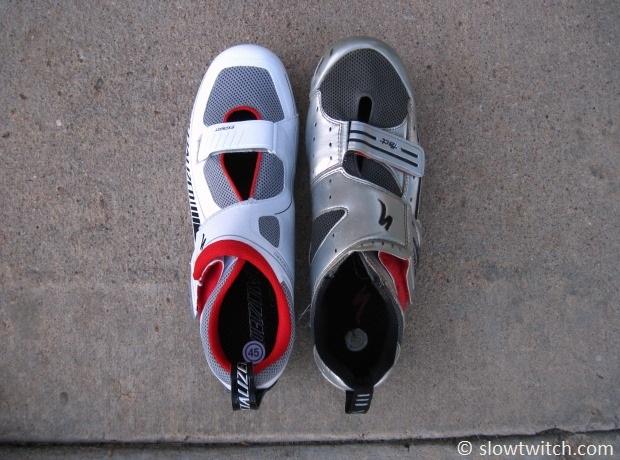
Both the old and new shoes have carbon soles. They look and feel similar, which is a good thing in my book. One clear improvement of the new design is a more substantial heel pad, which is replaceable and made of rubber (pictured on the right):
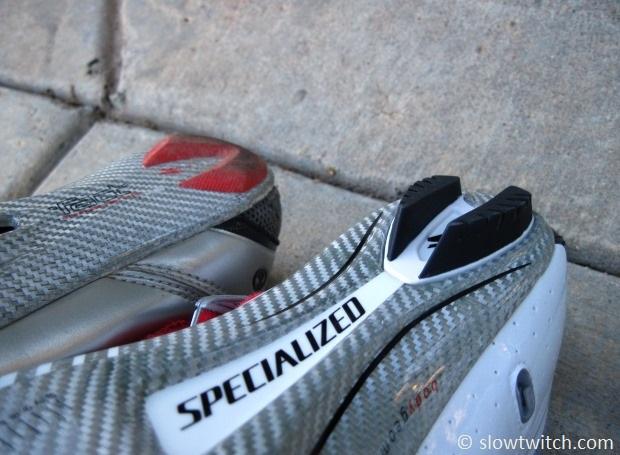
The new Trivent Expert has an updated version of the Specialized BG (‘Body Geometry’) insoles. The new insole is on the left, and the old insole is on the right:
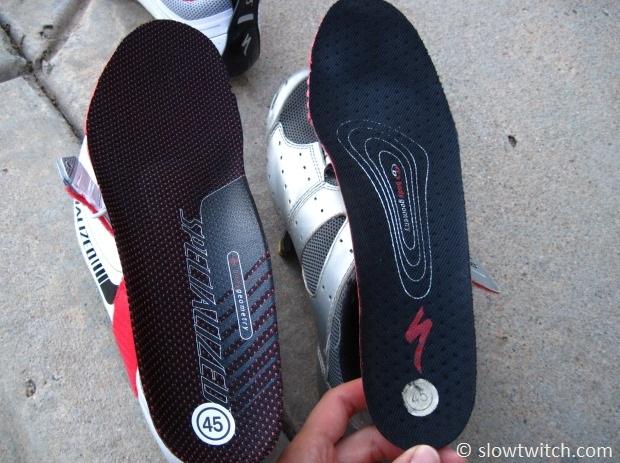
Let’s flip them over:
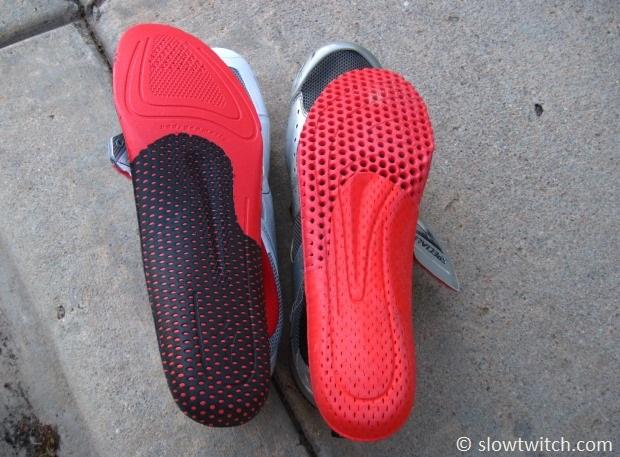
I really like the stock Specialized insoles, and have never had a desire to put anything else in my shoes. My old insoles have been washed a lot, but are still in good condition. Nothing has fallen apart… they just don’t smell like roses anymore.
One thing I’ve always liked about Specialized shoes is that they have replaceable female-threaded inserts (the part that you thread your cleat bolts in to). These are great for ham-fisted people that over-tighten and strip them out. You access them via a flap in the inside of the shoe:
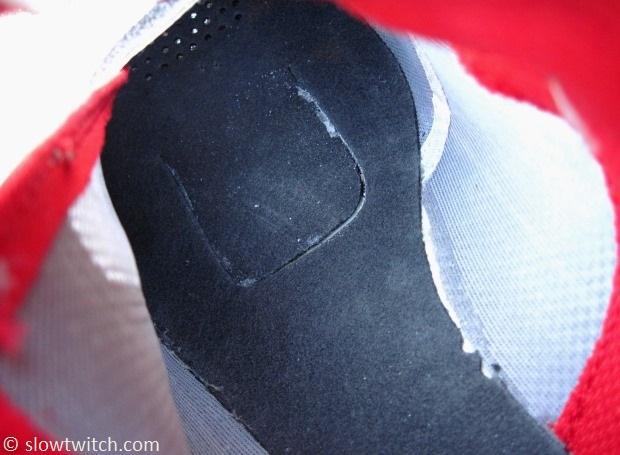
One new feature on the Trivent Expert is called the Launch Clip. It is a small hook that you can attach a rubber band to – for those that do a run-and-jump ‘flying bike mount’.
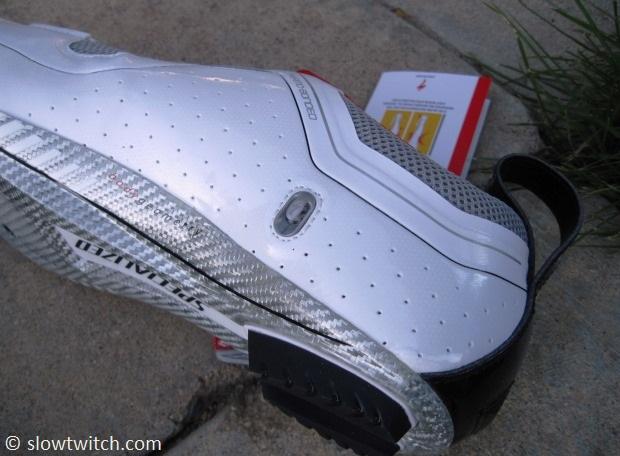
I have ridden with the new Trivent Expert shoes for several weeks now, and can breathe a sigh of relief that I have a brand new (and stink-free) go-to shoe for triathlon. The shoes feel plenty stiff and they’re soft enough for sockless wear. The sizing, in my opinion, runs very true – I’m a 45 in both Specialized and Shimano (I typically wear an 11.5 in US running shoes). I still love the fact that Specialized uses two closure straps for this shoe; some competitors use a single strap, which never feels as secure to me.
At $175, Specialized has a great shoe and a very competitive price. Compare that to $140 for a Shimano TR31, or $250 for the TR60. Mavic’s lowest-price option is the Tri Race, at $200.
Whole sizes: 39, 40, 47, 48
Half sizes: 41-46
267 grams, size 42
S-Works Trivent – $400
This is the shoe that got all of the attention during the 2012 Olympics – the S-Works Trivent:
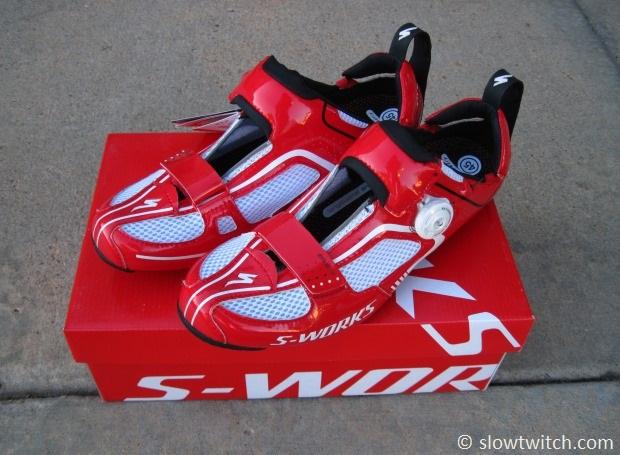
‘S-Works’ is the name that Specialized uses for all of their top-end bikes, shoes, helmets, and so on. To translate into the language your kids might use these days, the S-Works products are ‘fly’, ‘hot’, or even ‘sick’. Sick, indeed.
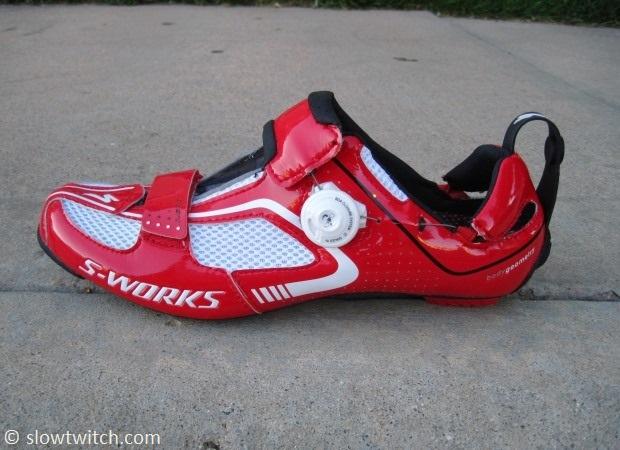
The big news with the S-Works Trivent is a fresh take on their Boa retention system. Boa uses a ratcheting dial to pull on a pair of cables to tighten the shoe. Rather than just pulling on the top of the shoe, however, the S-Works Trivent pulls from the front and back.
To loosen the Boa system, you have to pull out on the knob:
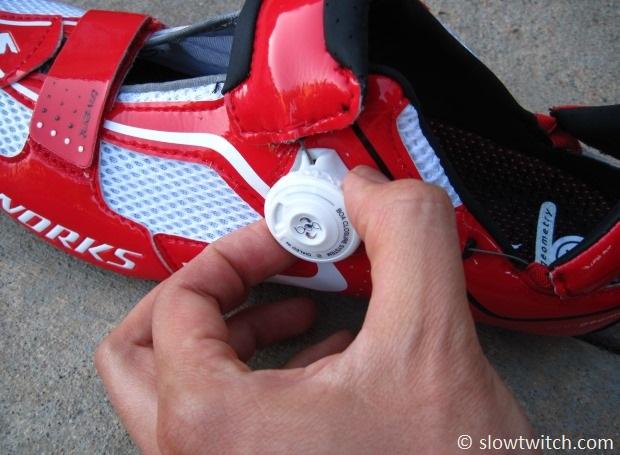
Now you’re free to pull the cable out:
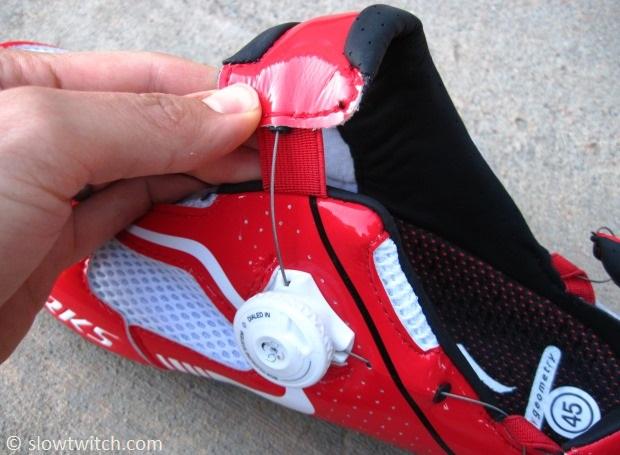
The entire heel portion of the S-Works Trivent pulls back and away from the shoe, leaving a huge entry point for your foot.
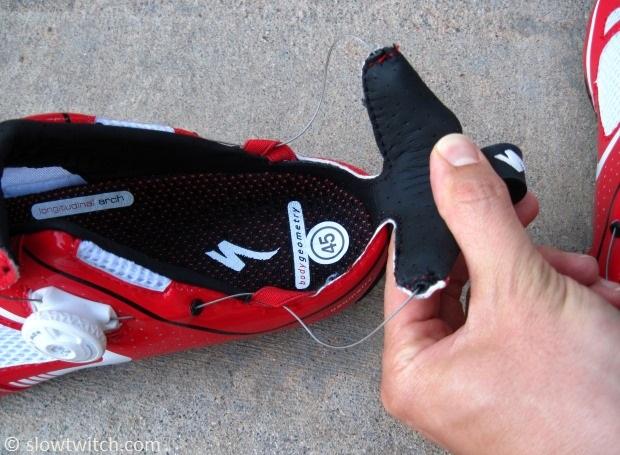
A magnet on the rear loop sticks to a second magnet on the shoe to hold the flap down:
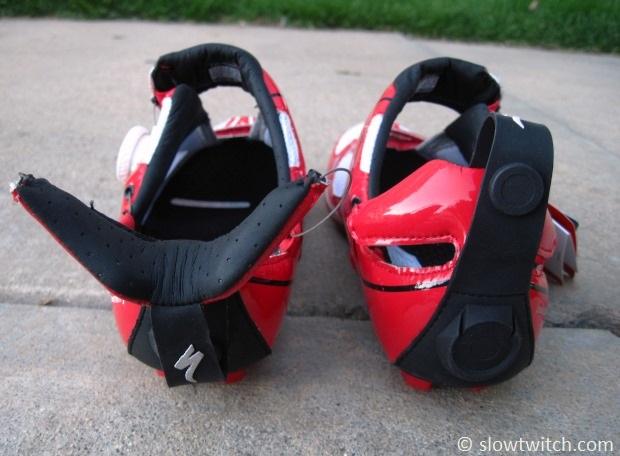
IMPORTANT NOTE: To tighten the Boa system back down, you must first push in on the dial. You will hear a loud ‘snap’ as this happens. The reason I mention this is that someone will forget to do this while setting up their transition area. If you don’t snap the dial down, you can spin it all day and won’t pull any cable back in.
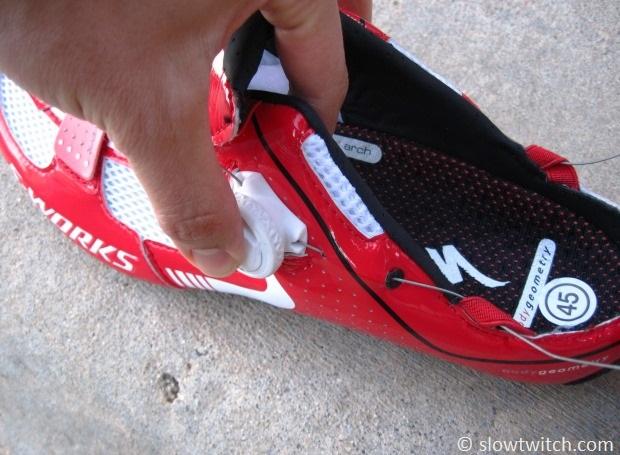
The S-Works model also includes the Launch Clip. It is absolutely necessary on this shoe – if you attach your rubber band to the rear loop, the magnets won’t hold everything together.
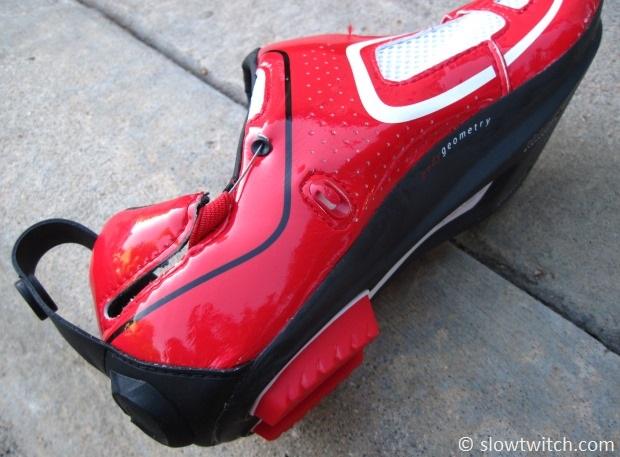
Do the high-tech dropped heels work? Are the shoes really faster? Do they feel less secure while riding?
For the first two questions, I hesitate to say too much. The most important thing with any shoe is that you practice. I’m personally very accustomed to the bike-mount procedure with ‘normal’ tri shoes, so I didn’t feel that the S-Works model was that much faster for me. I’d imagine that using these shoes for an entire season would result in greater time savings, as you become more accustomed to them.
I was more concerned with the feel of the shoe. After all, they look so minimal – I thought the heel counter would feel insubstantial. In my experience, the heel does not feel strange. It feels like a shoe. The fit did feel different than the Trivent Expert, but it was actually at the front of the shoe’s opening.
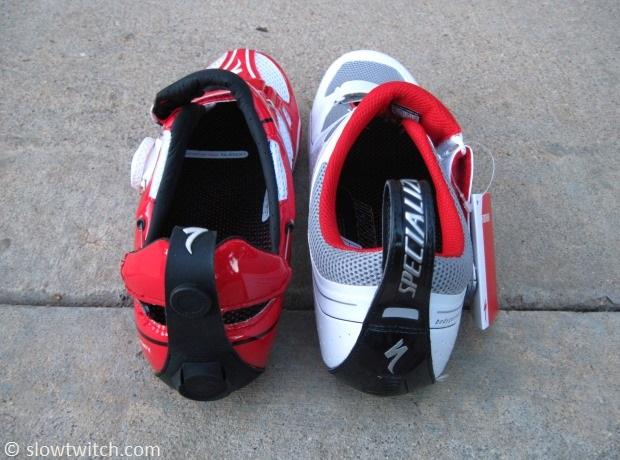
In the above photo, notice how the foot opening in the S-Works shoe is longer front-to-back than the Trivent Expert (the Boa system is tightened down all the way). I don’t envy the Specialized engineers that had to figure out this math problem – how long do we make the Boa cable… in every size of shoe? They had to recreate a standard shoe with a very non-standard method.
At least in my size 45, the rear cable length was spot-on. It tightened down exactly the right amount. The front cable, however, bottomed out in the dial before the shoe felt tight enough. I was still able to ride around in the shoes just fine, but they did not feel as secure as I hoped. Who knows – I may just have abnormally dainty ankles and feet.
At $400, the S-Works Trivent doesn’t come cheap. That’s $50 more than Mavic’s top-end Tri Helium, and $40 north of the Sidi T3.6 Vent. None of those shoes have the unique Boa system that the S-Works has, so I think the buying decision comes down to seconds saved in transition.
Whole sizes 36 – 40, 48
Half Sizes 41 – 47
280 grams, size 42
Cleat Placement
Cleat placement is always of interest with cycling shoes, and here’s our take on the Specialized triathlon product.
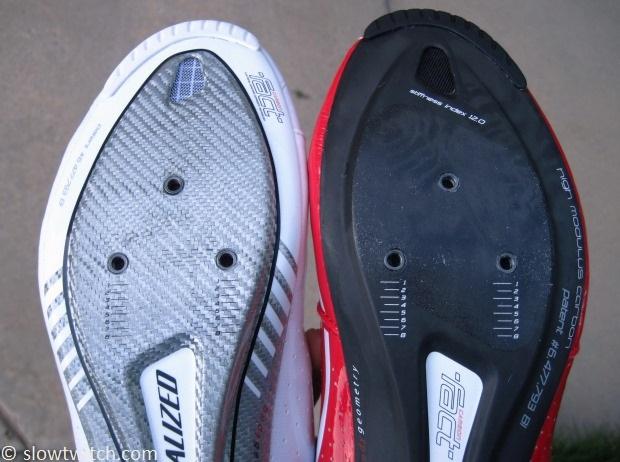
Specialized continues to use the 3-bolt pattern that accommodates Shimano SPD-SL, Look, Time, and other standard pedals (Speedplay can be used with their adapter plate). The placement of the three bolts appears to be consistent with their older shoes. I used both pairs of test shoes with Shimano 2-degree blue cleats.
Compared to Mavic shoes, the Specialized bolt holes are a few millimeters closer to the heel of the shoe. Compared to Shimano, they are a few millimeters closer to the toe. Personally, I slam my cleats all the way back on Mavic, but have a little bit more room to play on the Specialized and Shimano shoes. I think Specialized hit the mark very well for the vast majority of the market.
All images © Greg Kopecky / slowtwitch.com



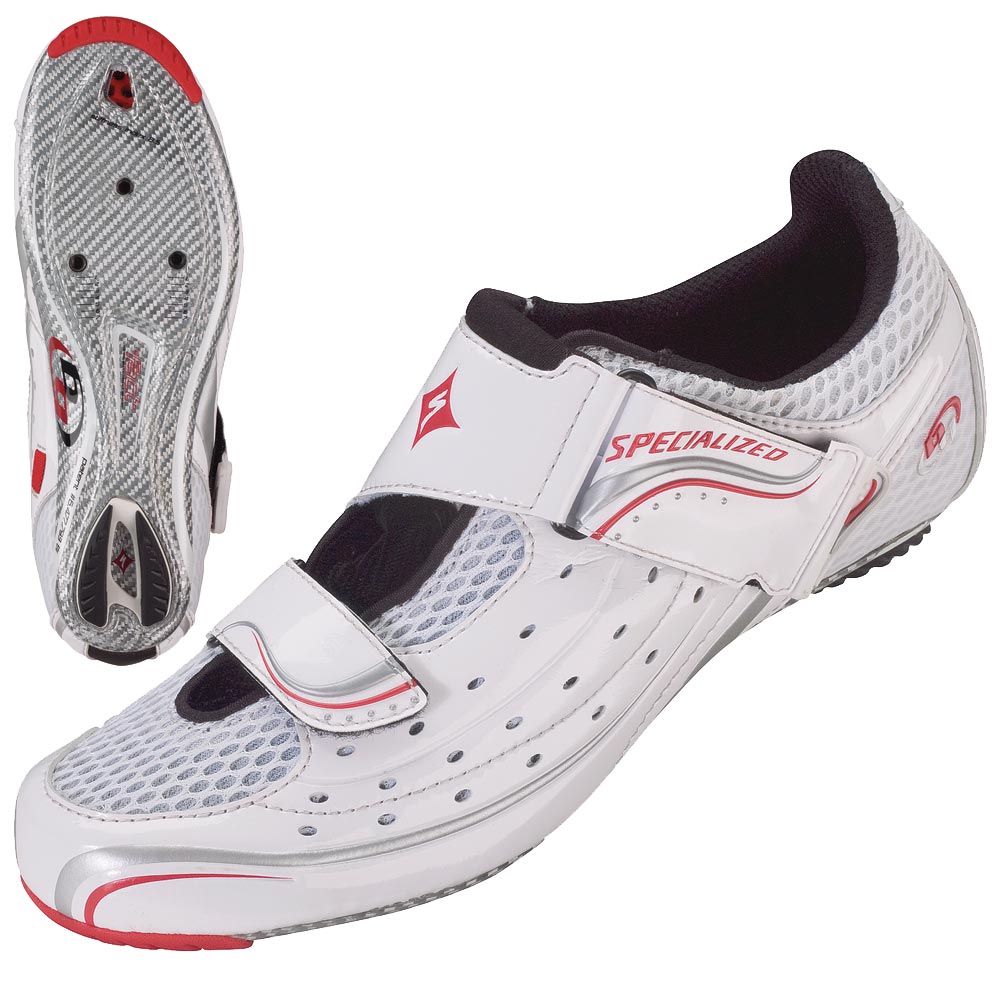
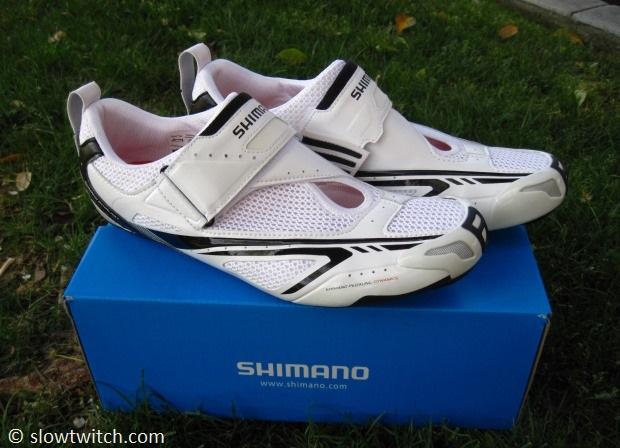
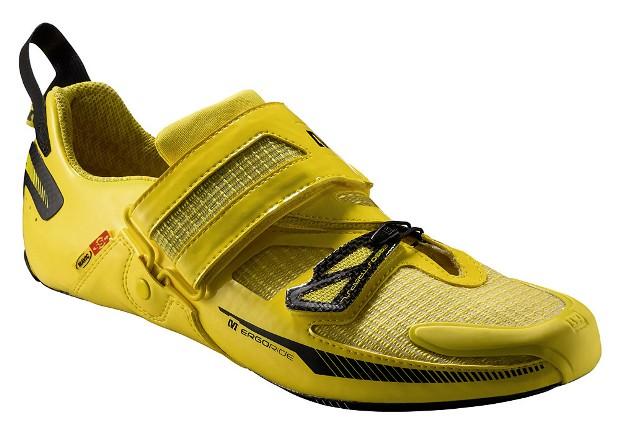
Start the discussion at forum.slowtwitch.com